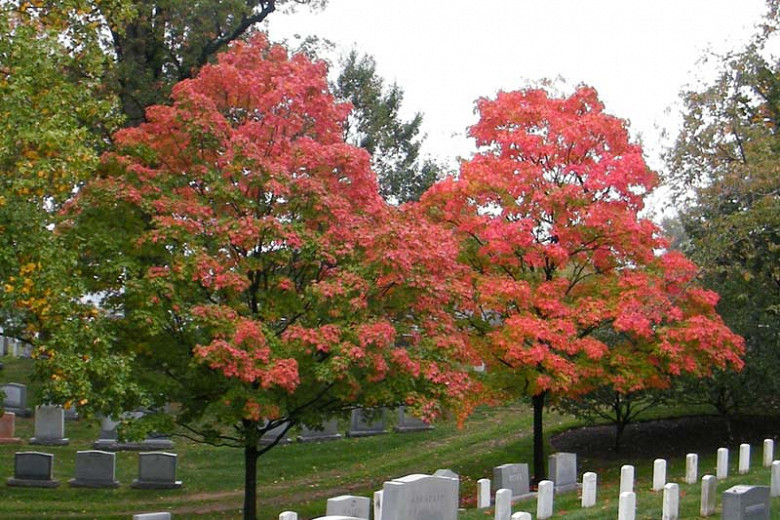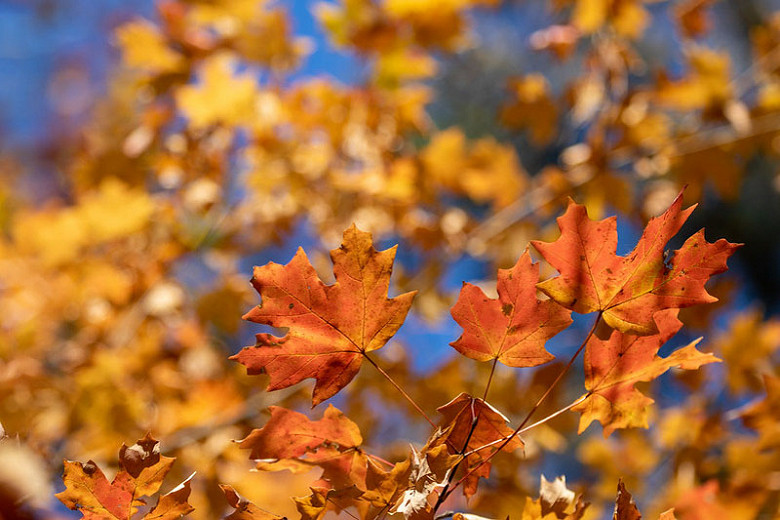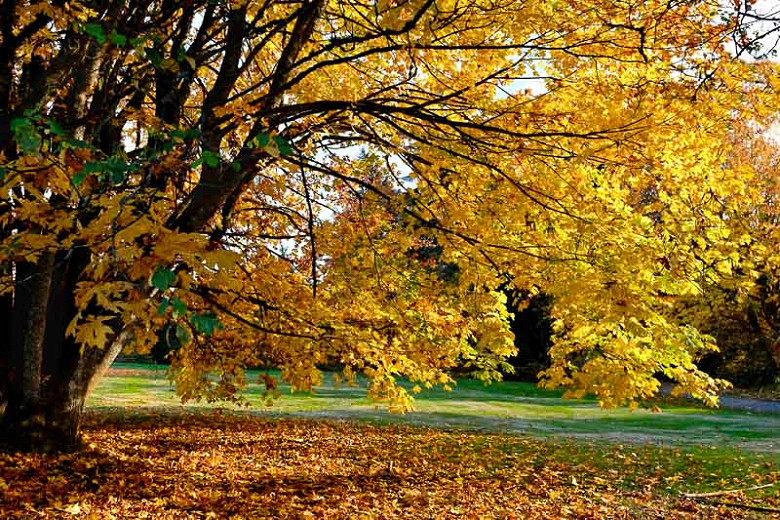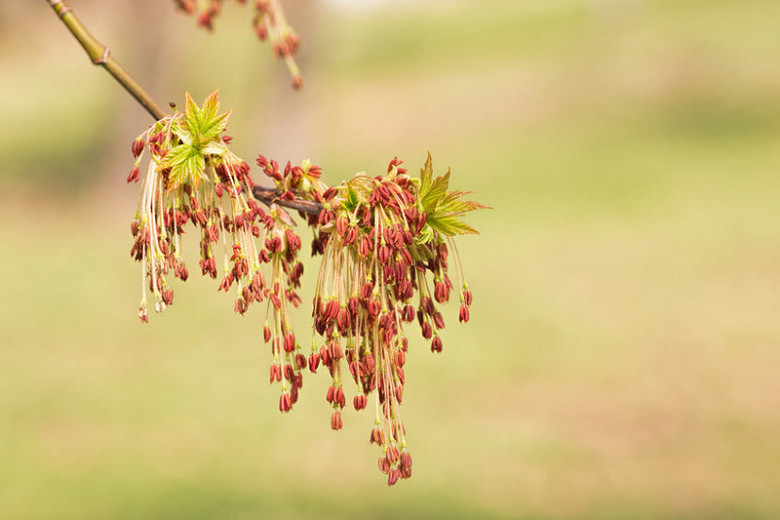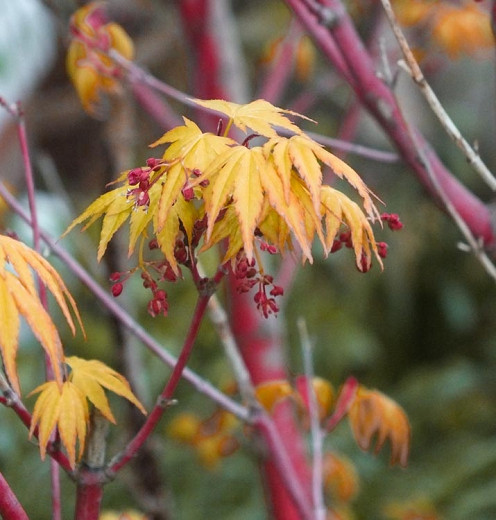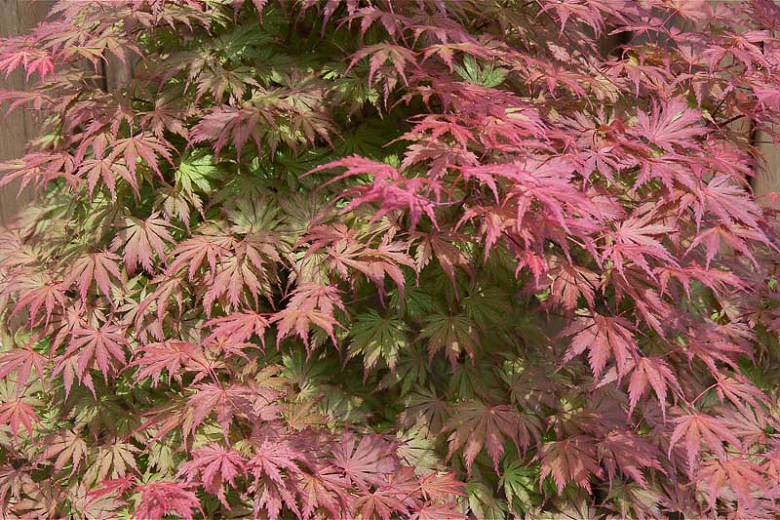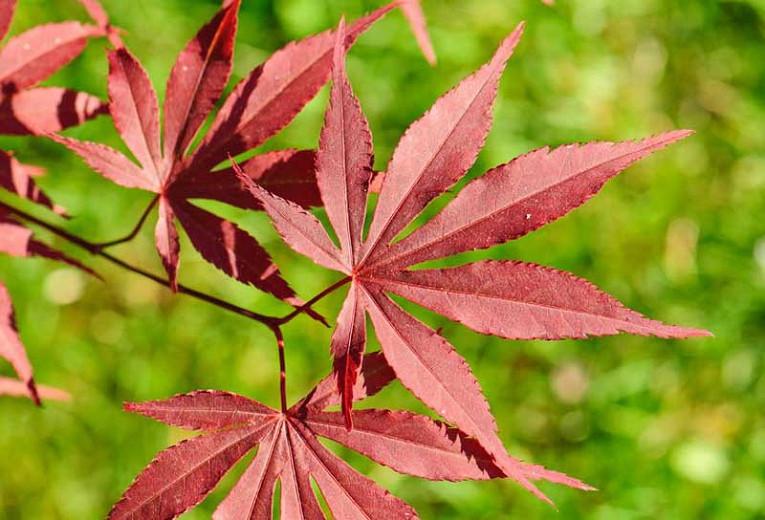Acer floridanum (Florida Maple)
An attractive and versatile tree for the home landscape, Acer floridanum (Florida Maple) is a medium-sized to large deciduous tree with an oval to rounded crown of moderate density. Its foliage of opposite, simple, palmately lobed leaves, 2-4 in. (5-10 cm), features 3-5 somewhat rounded lobes. Dark green above and paler underneath in summer, the leaves change to a brilliant palette of yellows, oranges, and reds in the fall. In spring, greenish-yellow flowers, borne in hanging clusters, appear before or with the leaves and are followed by two-winged samara. Florida Maple also provides some winter interest, with its attractive, light gray bark, with thick irregular curling ridges on older trees. The limbs are strong and not susceptible to wind damage. Noted for its greater resistance to heat than that of its showy relative, Acer saccharum (Sugar Maple), Florida Maple makes an excellent shade tree or specimen tree in southern gardens. Important for wildlife, it provides an early spring source of nectar for bees. Its flowers are visited by pollinators and the seeds are devoured by birds and small mammals. Several species of birds and especially squirrels make use of the tree as a nesting site.
- Grows up to 20-60 ft. tall (6-18 m) and 25-40 ft. wide (7-12 m).
- Performs best in full sun or part shade in fertile, moist, acid, well-drained soils. Florida maple will tolerate a wide variety of soil types but is not salt-tolerant. Drought tolerant once established.
- Low maintenance, this tree needs little pruning. If pruning is necessary, prune during the dormant season and avoid pruning in spring when the sap is running. Fertilize in spring before the leaves emerge.
- Keep an eye out for verticillium wilt, cottony maple scale, borers, aphids, and gall mites.
- Care should be taken to protect the trunk of the tree from damage by weed eaters or lawn mowers
- Propagate by seed.
- Native to the Atlantic and Gulf coastal plain in the United States, from southeastern Virginia in the north, south to central Florida, and west to Oklahoma and Texas, and also common in southern Illinois and Missouri.
Requirements
| Hardiness | 6 – 9 |
|---|---|
| Plant Type | Trees |
| Plant Family | Acer – Maples |
| Exposure | Full Sun, Partial Sun |
| Season of Interest | Spring (Early,Mid,Late)Summer (Early,Mid,Late)FallWinter |
| Height | 20' – 60' (6m – 18m) |
| Spread | 25' – 40' (7.5m – 12m) |
| Water Needs | Average |
| Maintenance | Low |
| Soil Type | Clay, Loam, Sand |
| Soil pH | Acid, Neutral |
| Soil Drainage | Moist but Well-Drained, Well-Drained |
| Characteristics | Showy |
| Native Plants | United States, Midwest, Illinois, Missouri, Southeast, Alabama, Arkansas, Florida, Georgia, Louisiana, Mississippi, North Carolina, South Carolina, Tennessee, Virginia, Southwest, Texas |
| Tolerance | Drought |
| Attracts | Bees, Birds |
| Garden Styles | Informal and Cottage, Prairie and Meadow |
